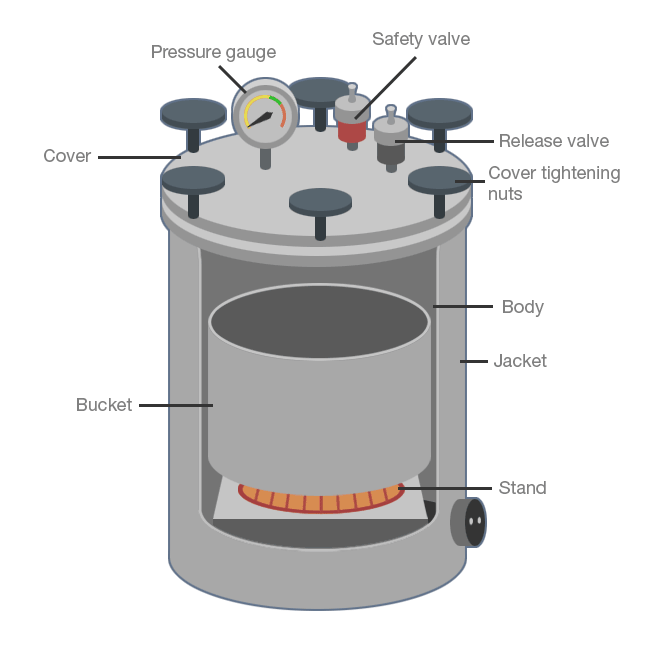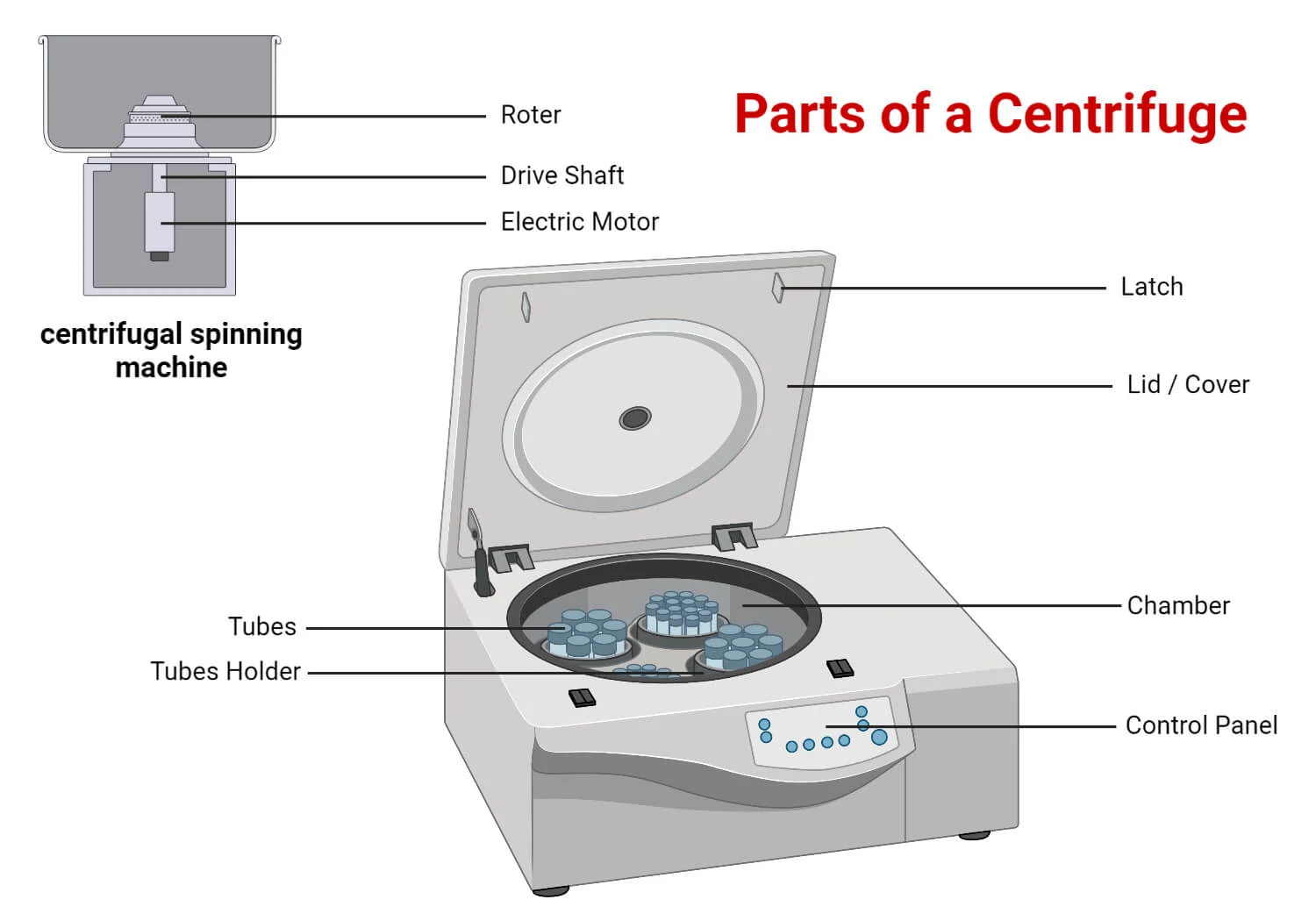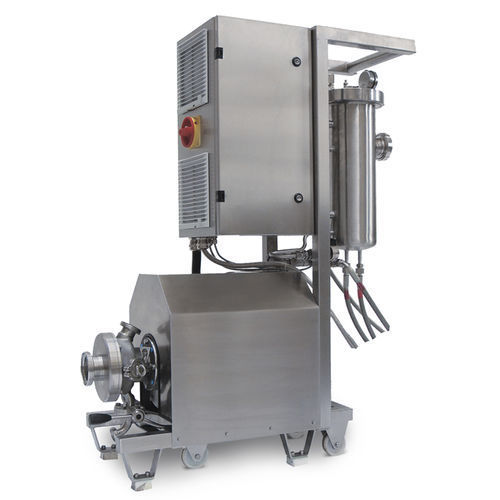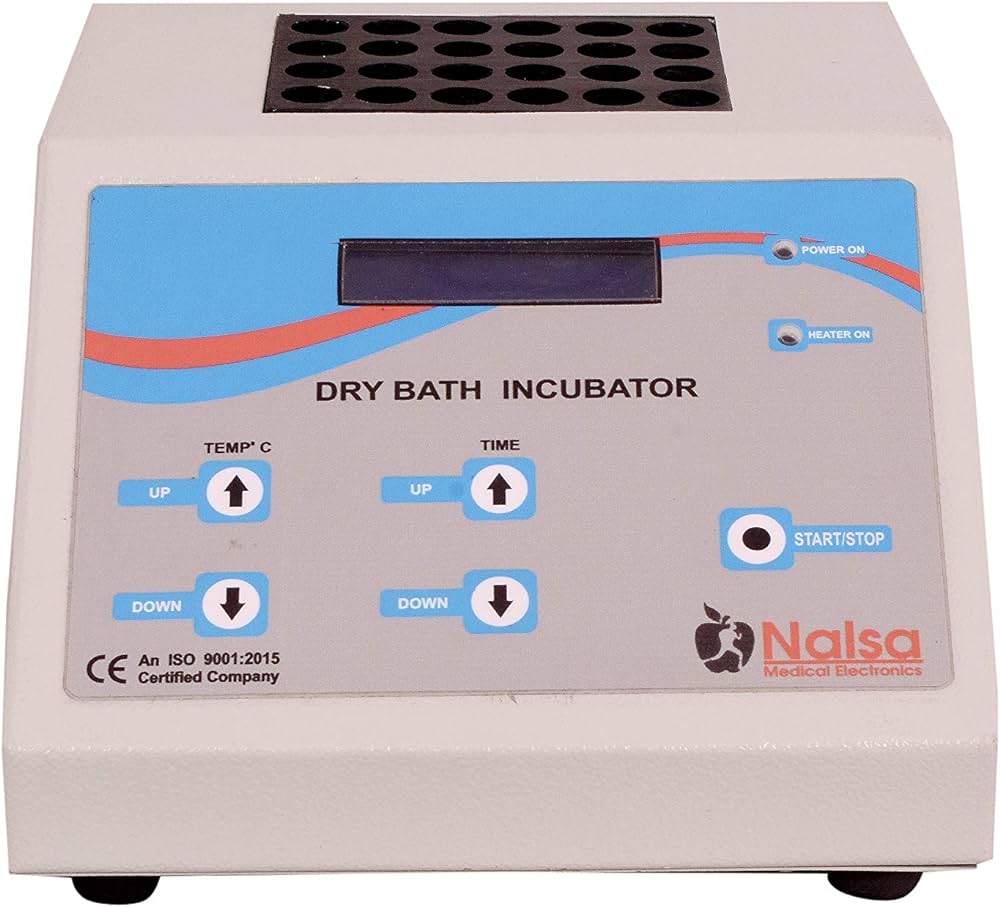Autoclave
Autoclaves are devices for sterilising laboratory materials. They are hermetically-sealed, heated chambers, which generate high pressure and steam to sterilise materials. The walls of an autoclave are thick, to enable the maintenance of this high pressure.
The autoclave’s superheated steam will sterilise equipment, media and certain kinds of biological waste. This high pressure supports very hot temperatures, which can eliminate harmful microorganisms effectively, including potentially harmful bacteria and spores.


Centrifuge
Using centrifugal force to separate components in a fluid, the centrifuge is an essential piece of laboratory kit. The device revolves particles at high speed inside tubes, with higher density particles sinking to the bottom, and lower density particles rising to the top. This is a good way of filtering a fluid to remove contaminants from it.
Centrifuges can isolate and separate suspensions and immiscible liquids (such as oil and water). Different centrifugal devices can hold a different number of tubes and will rotate at specific maximum speeds.
Homogeniser
Homogenisation is an intensive mixing process. It works by forcing a sample through a narrow space. The homogeniser accomplishes this using powerful pressure. In the pharmaceutical industry, during research, clinical trials and manufacturing, homogenisers play a critical part.
The extreme pressure of the homogeniser can provide significant particle size reduction and can provide valuable yields in cell lysis, extracting proteins or nucleic acids. Homogenisers are versatile pieces of equipment and are also available as handheld devices for use with biological samples.


Incubator and Dry Bath
In pharmaceutical laboratories, incubators provide controlled, contaminant-free environments for working with cell and tissue cultures. Incubators regulate temperature, humidity, CO2 and other conditions. This enables laboratories to grow and store bacterial cultures.
These include mini incubators, digitally-driven, with heating and cooling, or heating only, controls. Dry baths also provide precision-controlled temperature environments, with real-time monitoring. The dry bath will thaw, warm, boil and incubate specimens.
Water Bath
The water bath is an alternative to the dry bath for incubating samples at constant temperatures over long periods. These pieces of equipment come with built-in digital interfaces for accurate monitoring and control of water temperatures.
Water baths are excellent tools for incubating cell cultures, warming reagents, and melting substrates. They may also be a preferred method of heating flammable chemicals instead of an open flame.

